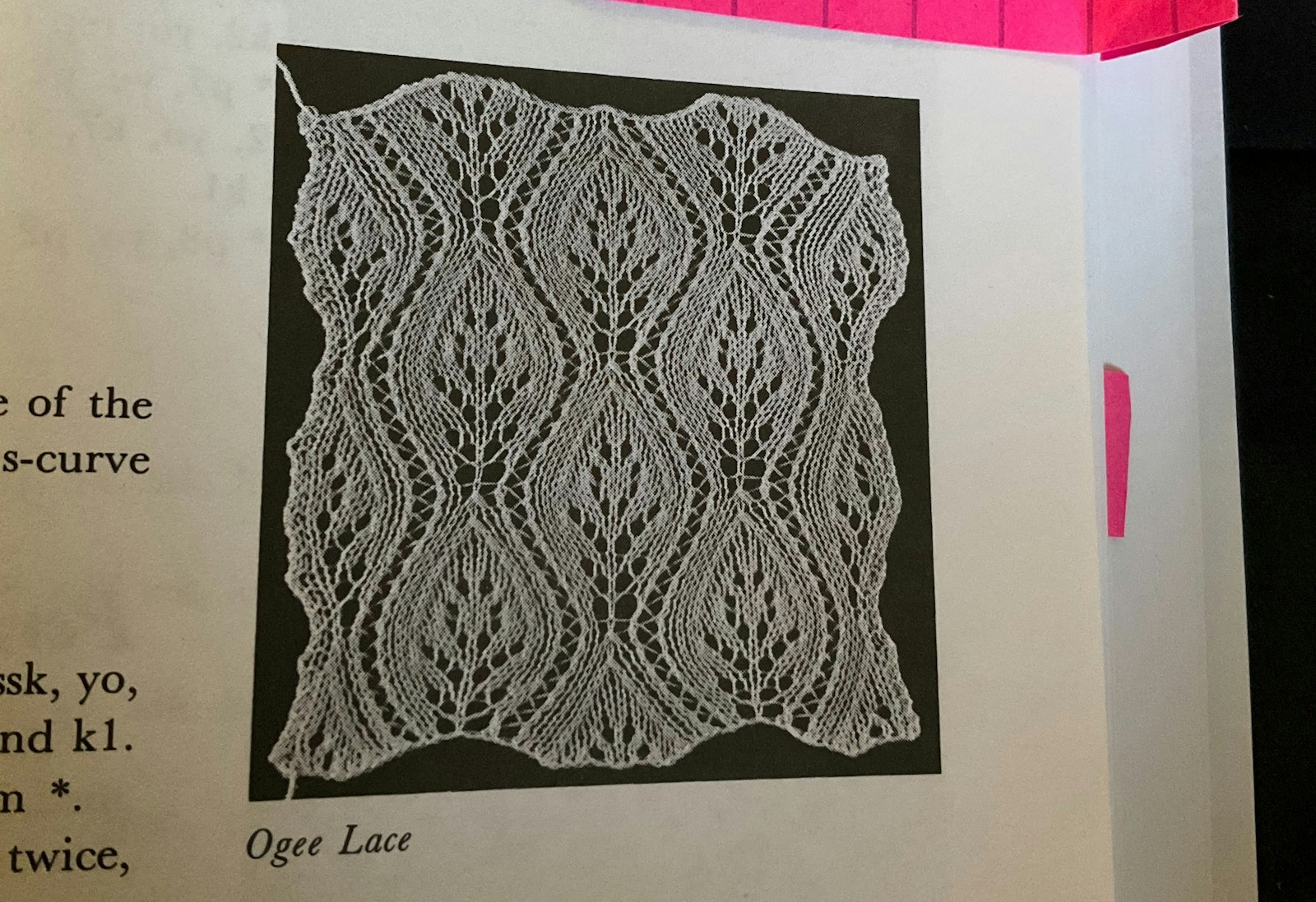Some of my favorite design inspirations start in stitch guides. These helpful vaults of swatches of knitting patterns let me see the knitting before I ever get started. Some of my designs are influenced by a motif I find in a book. Occasionally the swatch isn’t quite exactly what I’m thinking, or I only want a small section of the overall pattern shown. This was the predicament I was in when I created the Ogee Lace Socks that were published in the Jan/Feb 2018 issue of PieceWork.
Getting familiar
In browsing through my collection of stitch guides I found the Ogee Lace sample in Barbara Walker’s A Treasury of Knitting Patterns. I love the hourglass shaping, but with this also being a sock pattern I wanted to stay slightly practical by not doing lace over the entire surface. To begin, I knitted the pattern as written to understand which stitches contributed to the lace motif. Yes, I'm familiar with the dirty little S word: Swatching. Using a larger-weight yarn and needles also makes the pattern easier to see.
Swatches for possible designs tagged with the book information so I can go back and find it again!
Charting
Charts are another handy tool when it comes to dissecting out a lace motif. Once I work up the original, I know how many stitches I need and how they flow into the pattern. By drawing it out on a piece of graph paper or in a charting program I can see the motif and make any changes in increases or decreases that are going to affect the stitch count. For example, in the Ogee motif there are yarnovers and decreases that create the staggered flower for the overall pattern. These needed to be changed to knit stitches. Changing these stitches without accounting for yarnovers can alter the stitch count. The equation of increases and decreases in each row needs to balance out to zero. 
My hand-drawn chart on the left vs. the finished chart on the right. Can you spot the differences?
Break out the good stuff
Now I get to try the motif with the needles and yarn that I want to use for the pattern. Yes, I am going to swatch again and this time block the sample to check other factors. How much yarn does one motif take? Does it look the way I want it to after washing and stretching? This is especially important with lace because a sample never looks like the finished product. 
Beautiful close-up shot of the finished Ogee Socks, photographed by George Boe. Seeing my creations in print is amazing!
Just because a pattern is shown one way in a stitch guide, it doesn’t mean I have to use it that way. Dissecting out or altering the original motifs gives me a great base to start with when creating a design.
Katrina King, who in another lifetime earned a biology and neuroanatomy degree, has yet to meet a fiber craft she doesn’t like. Along with lace knitting, she also has crochet, weaving, spinning laceweight yarn, and tatting in her tool bag. You can follow her craft adventures at Threaded Dream Studio. When she’s not crafting, she can be found teaching at her local yarn shops, reading epic fantasy novels, and chasing her daughters to various activities in and around Fort Collins, Colorado.

